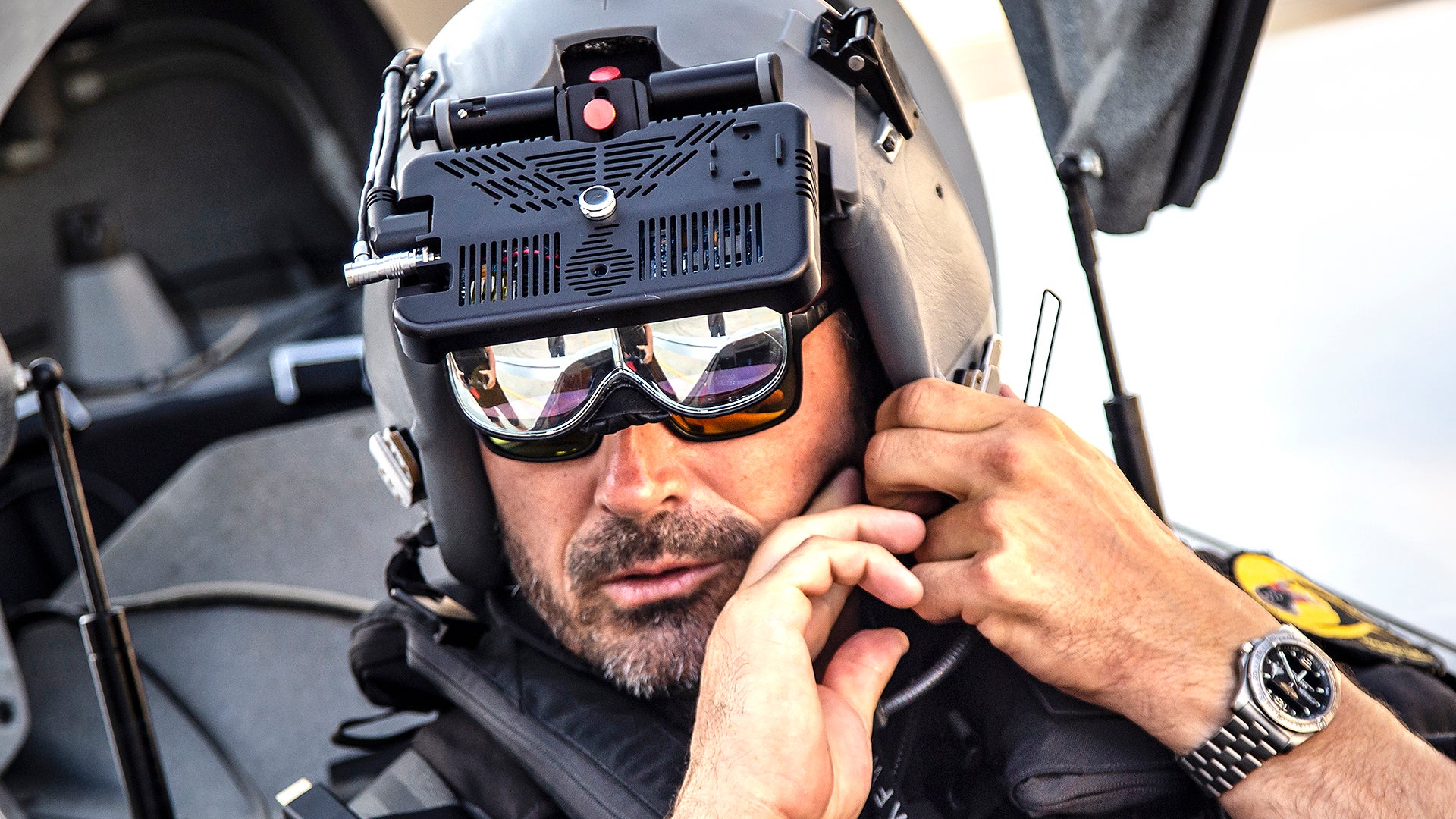Retired fighter pilot Dan Robinson and his team at Red 6 are working to revolutionize the way military pilots train for air combat, and possibly much more, by harnessing advances in augmented reality (AR). They are working to replace adversary aircraft that have to physically fly against fighter pilots—at a cost of tens of thousands of dollars an hour—with computer-generated projections displayed in front of the trainee’s eyes as they fly their aircraft through the air. If Red 6 is successful, the technology could bleed into many other areas of air combat training and move to other domains, as well, such as to the warfighter on land and at sea. In doing so, it would disrupt entire marketplaces and many traditional, long-held training techniques and procedures.
The potential savings and flexibility that the Red 6 concept brings to the fight are so massive that the Air Force is already working with the small company to move the idea forward. Still, major cultural hurdles are likely to supersede technological ones, but their timing couldn’t be better. As America’s flying force is faced with having to innovate at a far quicker pace than ever before in order to counter ballooning threats from China and Russia, AR-enabled air combat training is exactly the type of technology the Air Force brass say they aren’t only interested in, but that may be key to America’s future ability to provide air supremacy during a major conflict.
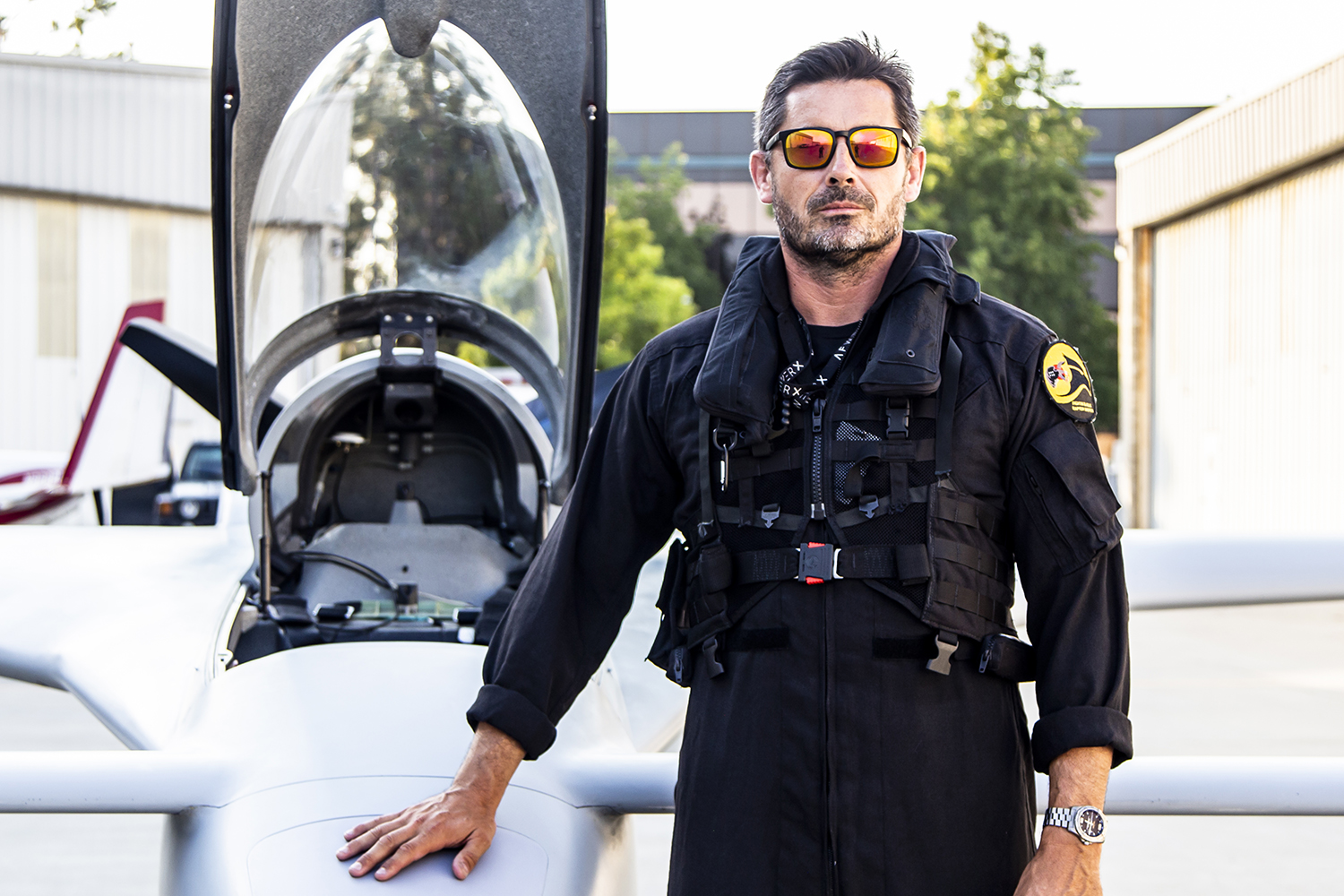
We talked with Dan Robinson at length to provide the most in-depth look at where Red 6 came from, what it is trying to achieve, and where it could be going in the not so distant future. Here is that interview:
Ty: Can you tell us a bit about your background Dan and how you came up with this concept?
Dan: I was an RAF [U.K. Royal Air Force] fighter pilot for 10 years or so. I graduated Fighter Weapons School, and I was lucky enough to be the first non-American to fly F-22s for the U.S. Air Force. And I wasn’t just the first non-American, I was one of the first kind of cadre of guys that were on the first operational squadron, so right at the very beginning of the program, which was obviously a huge privilege, but tremendous insight into an astonishing platform and the capabilities thereof. It also showed some of the real limitations associated not just with that platform, but with the broader combat air force… Namely, training, which ultimately leads us to where we are.

So, in simple terms, every time we go fly and train, we need someone to go fly and train against, and that’s a multi-billion dollar a year problem. It wasn’t being solved back in 2006 to 2009, and it’s only gotten worse since then.
It’s a problem for a number of reasons. A, the outright cost. It’s obviously extremely expensive to provide it. B, we’re critically short on guys and girls on the front line because it’s hard to find us, hard to train us, and hard to keep us.
I would say that, critically, whilst we’ve been involved in conflicts in the Middle East in the last 20 years or so, two things have happened, geopolitically. You’ve seen the re-emergence of Russia onto the world’s stage as a state actor and proliferation of technology coming out of there, which is credible, particularly when it comes to IADs (integrated air defenses) and next generation airplanes. And I think most importantly of all, of course, is the rise of China and the pace of innovation coming out of China.
I think China has historically been very good at copying technology and I think we’ve seen a definite shift to innovation and a systematic engagement of the industrial base around a long-term strategy… Whereas before, we didn’t really have any near-peer threats, it’s fair to say that some of the platforms and the capabilities coming out of China are certainly near-peer and in some instances are downright scary. And if we’re not scared of it, we are wrong, we should be and we should be doing everything we can to counter that.
So, that’s significant because in the F-22, even if we could generate the numbers of airplanes, platforms, and pilots to do it, how do we train, truly train, against near-peer threats? The likes of J-20 or Su-57, things like that. That was a problem that I really was passionate about solving.
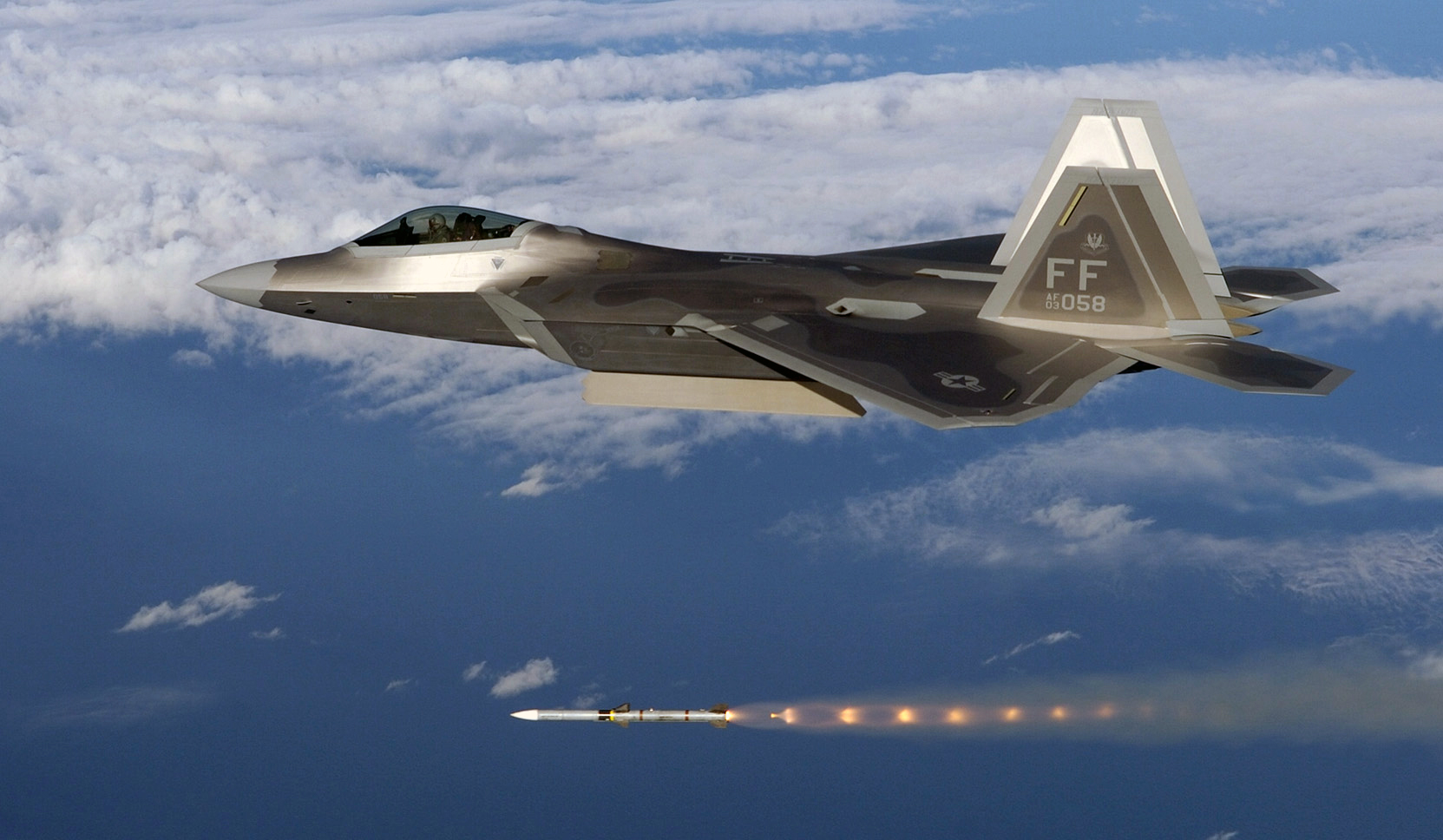
As it happens, life would take me in a meandering direction to Red 6. So I left, went to business school, worked in finance for a while, grew a business in the U.K., sold the business in the U.K., and kept coming back to this problem of adversary air, and how do we solve it? Now, as a happen-chance, there was a serendipitous series of events that brought me back to California and I started thinking about the problem again.
Unrelated to the problem at the time, I decided I was going to build my own airplane, and I set about building an airplane, which is an experimental airplane, called a Berkut, and that’s a separate story in itself and one for over a beer maybe, but suffice to say that life was absolutely telling me to build that airplane. In the midst of building that airplane, two individuals literally walked into my life. Both with rich backgrounds in augmented reality and virtual reality. One of them, in particular, had pulled off a world’s first, I think back in 2015, in VR.
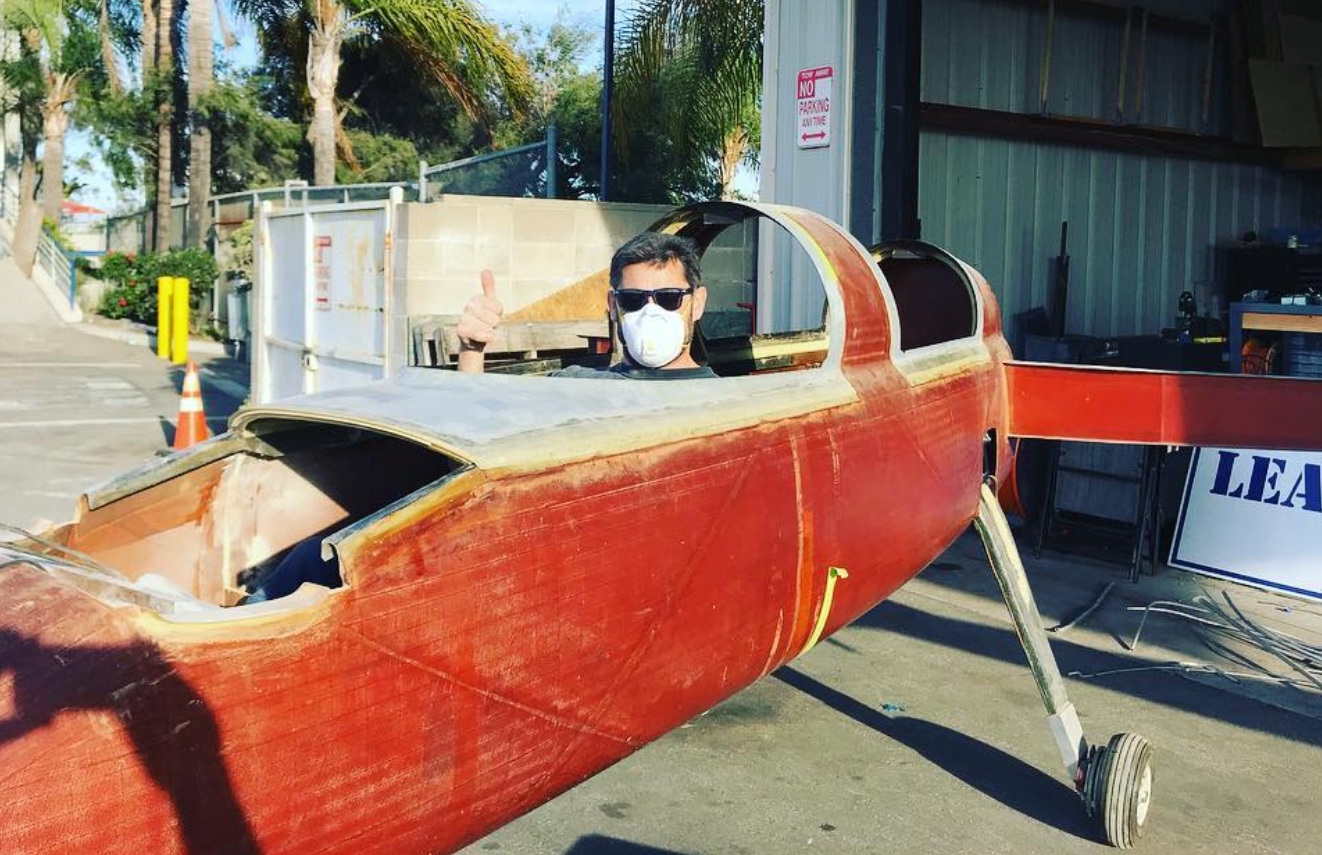
And I should pause to ask here, do we understand the distinction between virtual reality and augmented reality? And if not I could cover it really quickly.
Ty: Absolutely, but why don’t you just cover it in your own words so we can set up for what’s coming.
Dan: Okay. So virtual reality, we go into an entirely different world. You and I sitting together, we put our headsets on and we could be in the Bahamas, kite surfing, or whatever it is. Think Holodeck Star Trek type stuff. Augmented reality is a much more complex problem to solve because what we try to do is put virtual entities into the real world that interact with our surroundings as if they were a part of the real world, and that’s a very difficult set of technical problems to solve.
Back in 2015, going back to the guys, one of the guys had pulled off a world first in VR. They took a real race car, put a real race car driver in it, on a real race track in one location, concurrently in a separate location, they took another driver, another car, and another racetrack, and at the same time, both of these drivers went into a virtual world that was created for them and raced race cars against each other. I mean real race cars, against each other, blind, completely blind to the outside world. So they met each other in a volcanic, ashen, molten landscape and raced these real cars around this landscape in VR, which was stunning. As soon as I saw that, the light bulb went off for me. I started connecting dots and I asked two simple questions.
One was, “Guys, is that possible in airplanes?” To which they scratched their heads for a little while and came back with a, “Yes, technically challenging, but we think we could do it.” The next question I asked, and the reason I explained VR versus AR is, “Okay, no one is going to allow fighter pilots to fly around in a virtual world blind to the outside world in VR. So is this possible in AR?” And they looked at me as if I was crazy and said, “Absolutely not.” And I said, “Why?” And they said, “Because augmented reality doesn’t work outdoors and it doesn’t work in dynamic environments.”
Long story short, I kept asking why, until we came up with a thesis, which was a different approach to how traditional players do AR that we felt would work.

I then got excited because the idea I was obviously coming up with was, if I can synthetically inject virtual entities into the real world, up in the sky, and have them maneuver in relation to airplanes, real airplanes, then why would we ever need to put another physical asset, pilot, fuel, logistics up in the sky again?
Now, that’s a vision, right? That’s obviously a little ways off, but it’s a vision that is within the realms of possibility for sure. So, I knew if we could pull this off, we were gonna change the future of how our combat air forces and beyond will train.
With that in mind, very quickly, I called the Air Force’s AFWERX up and I said, “Hey, you guys remember me? Well, I think I can save you billions of dollars a year, solve your Red Air training shortage and your pilot shortage as well, and allow you to train against any near-peer threats. And here’s how… ” They were obviously skeptical, but intrigued. They said, “Go speak to the Air Force Research Laboratory.” So, I called up the Air Force Research Laboratory and said, “Hey guys, this is us,” and they started telling us about LVC [Live Virtual Constructive training] and the work they were doing with the SLATE program, which was extremely encouraging. As I started studying LVC, I realized that it absolutely was aligned with what we’re doing, and it was aligned with what we’re doing because of one of the critical limitations of LVC.

A Live Virtual Constructive is a 50% solution. Why is that? Because it’s a beyond visual range solution only [not for dogfighting within visual range]... And as soon as those synthetic entities, be they virtual or constructive, get within the sort of five to 10 nautical mile range where the pilot starts transitioning from the tactician to the fist-fighter, and he puts his or her head out the window, there’s nothing there. Then the whole training solution collapses. Why is that? Because there’s no way of synthetically putting those entities into the field of view of the pilot. Why is that? Because so far augmented reality certainly hasn’t worked outdoors or in dynamic environments and it absolutely hasn’t worked outdoors in dynamic environments at multiple hundreds of miles an hour up in the sky in three dimensions.
So, when I listened to the LVC guys and I said, “Well, here’s what we’re building,” they couldn’t believe it. They said, “Guys, we’ve been looking for this for over five years, no one is doing this. Is it true?” And I said, “Well, right now it’s a… We think so. We have a thesis and we’re getting ready to build this out.” And so they partnered with us, through AFWERX and they set us up with two challenges. Firstly, just go prove that your approach toward augmented reality will work, initially in an airplane, firstly on the static environment on the ground. We had a ground demonstration back in February of 2019 where we invited a bunch of folks from the Air Force’s Test Pilot School, Research Lab, and Weapons School, they all came to see us and they sat in our airplane. This experimental airplane that I happened to be building became our test platform, and they were able to fly an augmented reality tanking sortie, and then go fight a couple of Russian Su-57s.
It was a clunky prototype demo at the time, but it proved that our thesis was indeed possible. So, the next challenge they gave us was, “Okay, obviously go prove that this works up in the air.” And so that was targeted for November of 2019, and the Test Pilot School said, “Look, guys, these are big claims you’re making, so let’s do a crawl, walk, run approach. Initially what we’d like you to do is to prove that you can just fix a static object up in space and we can maneuver in relation to it as if it were a real object.” So, we became known for this three-dimensional cube that we’ve got floating around the skies of Southern California, and it’s a 500-foot by 500-foot cube and it’s framed with no sides for a reason I’ll get to here in a second. We technically actually achieved that in August of last year and whilst from a developmental test and engineering perspective, I knew that that was gonna be extremely significant to both engineers and developmental test pilots, I knew that from an operational perspective, pilots would understand airplanes flying around, and so I pushed the team really hard, and in doing so, we cracked the problem.
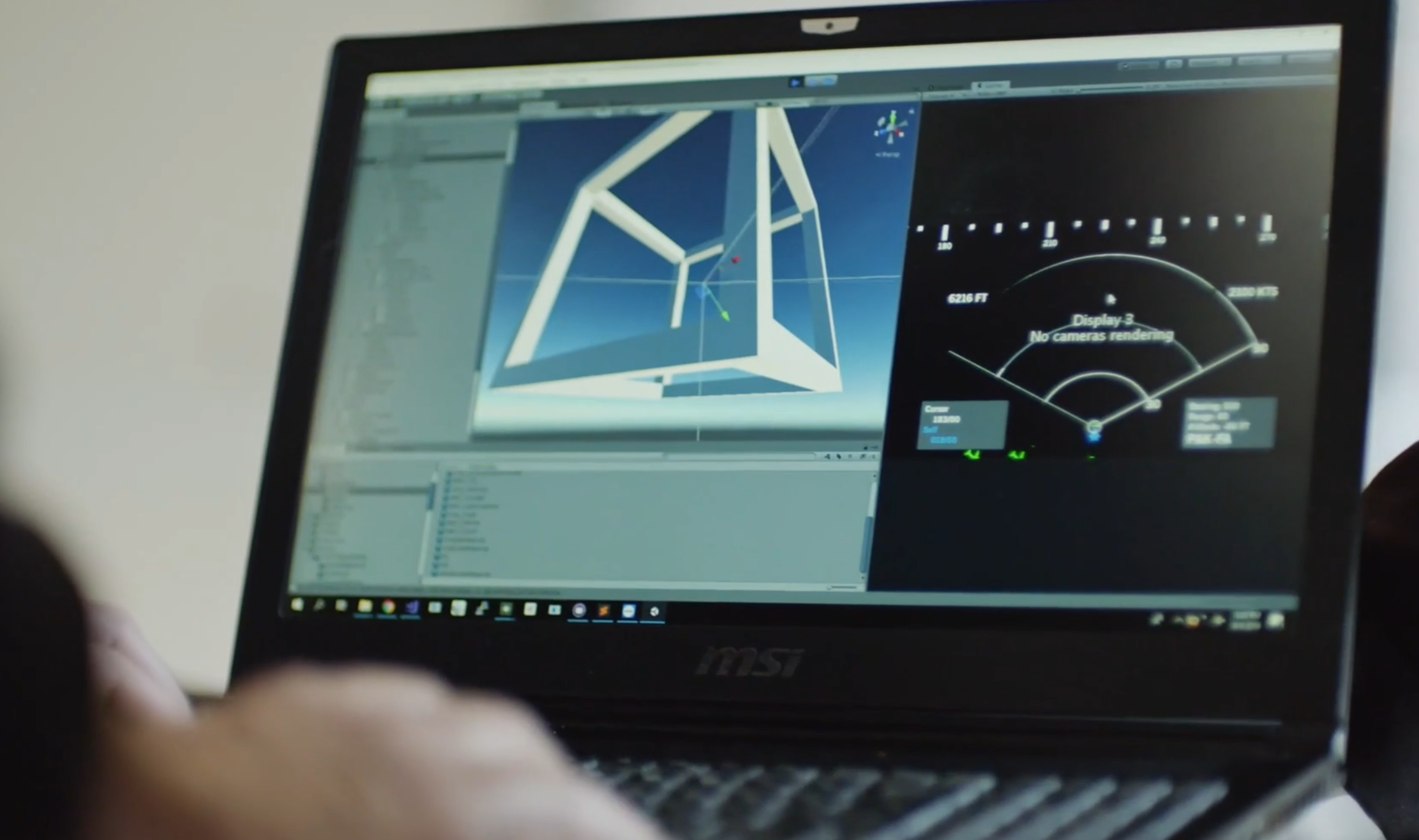
When the guys came out for the demo in November of 2019, we took them up in a real airplane we flew them to the cube and the cube is amazing, and as we get there, it’s a big old cube floating in space. As we get closer, it gets bigger, as we fly around it we can observe aspect changing, size changing. I mentioned it was a wire-framed cube with no sides, that was for a very particular reason because I wanted to demonstrate the truly immersive nature of this technology. What that means is we were able to fly through the cube, and this cube surrounds the airplane as you go through it, and it’s so compelling that as you fly your airplane, through this virtual cube that doesn’t exist, I’m careful not to hit the wings of the airplane on the sides of the cube, which sounds ridiculous, but it demonstrates the immersive nature of the technology.
So, we came off the cube and everyone was really excited. It was a big, big win for us, and then I was delighted to say, “Well, that’s not all, so now come and see this,” and we did an intercept on a virtual KC-46 tanker, and we pulled up alongside a virtual tanker flying around the sky, and it looked and felt like a real big old airplane sitting next to us as we pulled up in formation. On its wing was an F-22, and then we slid around the back, we dropped into a pre-contact position, and there was a boom hanging off the back of the tanker and we drove that boom into the airplane that I was flying. It was so accurate that I can drive the boom of that tanker into my head inside the cockpit.

It was absolutely stunning. So we did the world’s first-ever augmented reality refueling training sortie. Then we came off that and we did an intercept on an Su-57 and we did the very beginnings of a dogfight against an Su-57 just flying around in augmented reality up in the sky.
When they all saw that, everyone was stunned. We were transitioned immediately to a SBIR Phase II with the Air Force and then invited out to the Weapons and Tactics Conference, which is held at now in I think this was in January or February of this year. So we went out to the Weapons and Tactics Conference. We got to sit down with a new chief and a bunch of senior folks, and we took a bunch of generals flying, a bunch of colonels flying. To an individual, they were all stunned and blown away with what we’d done. So much so that they invited us out to ACC [Air Combat Command] earlier in the year and now the Air Force is transitioning us to a SBIR Phase III, and so we’re the first company in AFWERXs history to make it to a SBIR Phase III, which is extremely exciting.
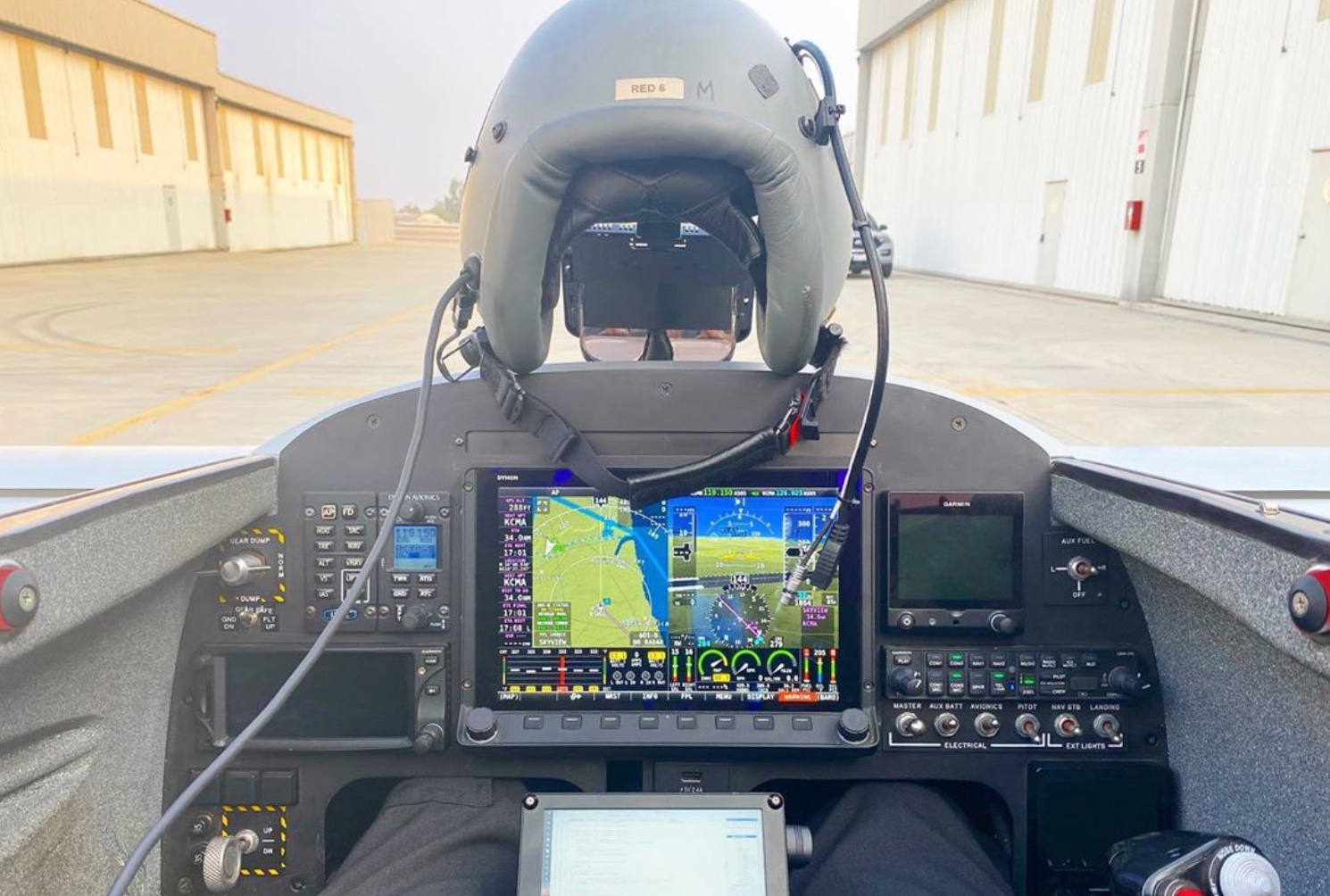
I should say concurrently, we were also demonstrating the technology to a bunch of industry partners, all of the big ones. I think most prominent of all was the Skunk Works out of Lockheed Martin. I think that was the most nerve-racking demo for us, as well, because we thought Skunk Works would come along with all of their tech and the programs they’re working on, and they’d look at us and laugh and pat us on the head and say, “That’s a cute demo guys, but here’s how we really do it in Skunk Works,” and on the contrary, they were blown away. They said, “No, guys. Holy Moly. This is far away ahead of anything we’ve seen out there.” And so with that, then Lockheed Martin started showing an interest in us, and after a series of about five-six months of negotiations, we just closed an investment from Lockheed Martin into Red 6, which has a number of strategic benefits, not least access to fifth-generation platforms and beyond.
So, you join us right at this time now where I’ve literally just come back from Fort Worth, Texas having met with Lockheed and talking about plans moving forward together, and it’s a really exciting phase.
Ty: There are very few times that I’ve seen technology, including the leading edge of consumer technology, and the needs of the military converging together for something like this. I’m a VR user myself. I try to keep up with it. Nothing, obviously, as advanced as this, but this solves so many problems that it’s kind of amazing where it could go so fast.
One of the biggest air combat training issues that we talk about often is the target saturation issue the Air Force and the Navy are facing in terms of red air training. They have aircraft like advanced 5th generation fighters, and even upgraded 4th generation ones, with pilots in the cockpit that are not challenged enough with the number and capability of the adversaries they put in the air to fight against them. So, obviously, augmenting the tangible aggressor aircraft that are out there is probably a huge part of this, right? Instead of putting up a 4 vs 8, which is quite a large adversary air training mission, you could theoretically put up a 4 vs 30 and it wouldn’t cost any more money to do. Is that a major area that you’re looking at, the augmentation area, where you add additional airborne threats to those that are actually there, not just the replacement of all of them?
Dan: Absolutely, because there are two observations you made, which are really astute, and one is the intersection of commercial and DoD. If I can just talk to that first before I come back to the saturation issue, it’s important because I think one of the reasons that everyone has lamented the sort of… The struggle that AR has had to be adopted is frankly, there are a bunch of technical challenges to it, but AR is fundamentally an indoor solution only. I can put a pink elephant on your table and it can dance around, it’s cool for a second, but who gives a shit? Ultimately, AR is an interesting technology, looking for a home. It’s a solution in search of a problem, and one of the key aspects to AR being adopted for a mass consumer market is it has to be mobile in nature, which means it has to work outside and it has to work on the move.
There are a bunch of other technical challenges to solving that for the consumer, right? Not least of which price point, power, GPU, CPU, all that kind of stuff. But this is a big step forward, so that’s the first thing. Backing into your other point, which is the intersection of this, because even if that technology did work for the consumer, what would they truly use it for, right? And a bunch of folks, I mean VR is obvious, but a bunch of folks have applied a lot of thought to this, and what is fundamentally the use case for AR right now? It’s difficult to answer that, right? You can give generalizations, but to be very specific, it’s difficult. What we have here, and I think this is really key to what you were pointing out, is we have an incredibly compelling use case into which there is an acutely defined pain point, into which we have said that AR now finds a home because AR can solve this problem directly. I think that’s one thing that sets us apart massively.
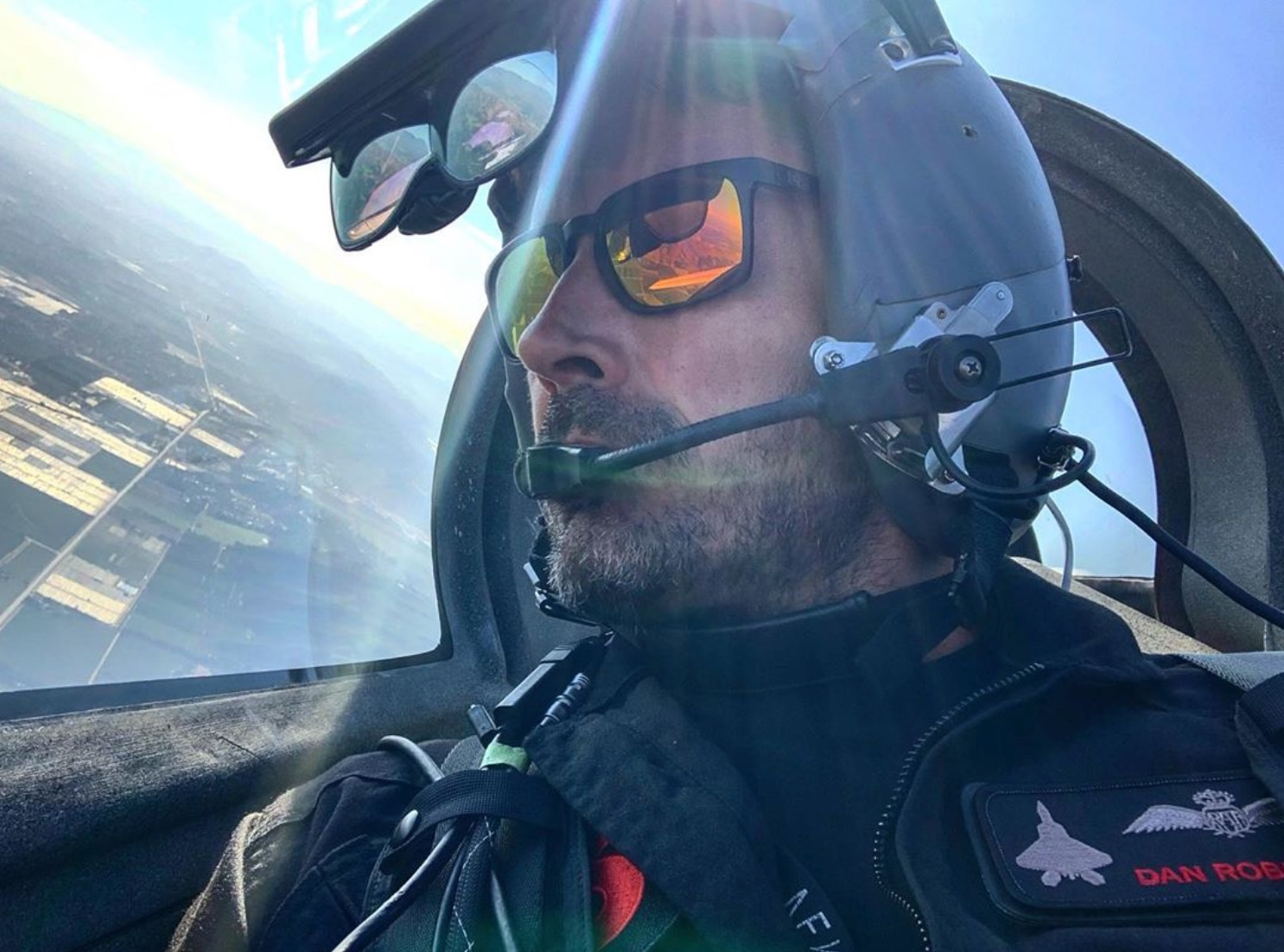
That leads directly to the second part of the question, which was saturation of the targeteering. Yeah, we can replace obviously the red air entities out there, but I think for any kind of high-intensity war-fighting, you are quite right, we need to be able to replicate that A, the technical sophistication level, but B, the intensity and saturation and numbers that are physically out there. I think it’s really important to do that because if you think about the conflicts we’ve been in in the Middle East, it’s almost as the West assumed like air dominance is our preordained natural right, and on the contrary, it’s not that at all. So whilst we’ve suffered terrible, tragic casualties on the ground in conflicts in Iraq and Afghanistan, they would be exponentially worse if we did not have control of the air, and we’ve always had control of the air.
Then you start looking at, well, what does a near-peer adversary conflict look like? Like China, let’s say in the South China Sea, somewhere like that, where we’re penetrating airspace. You bet your ass we’re gonna have to go fight and get control of the air, and we are going to be outnumbered and they’re going to be on a technical par with us. So the ability to not just emulate threats accurately that are relevant and current, but provide them in sufficient numbers is a key value proposition of this technology. So I think you’re absolutely right.
Ty: Why the numerical superiority issue is so big, especially with what we’ve discussed and what I talk about a lot in terms of the China scenario, people just have no idea really what this looks like. China knows it can flood a zone with throw-away old MiG-21 and F-7 drones that are flying just to some point to crash, all in an attempt to complicate the tactical air picture. This is, in addition, to their vast numerical superiority as we would be fighting in their backyard. This is all part of their tactics base, and so a lot of times when we talk to people that are in the red air business, their eyes kind of glaze over when we discuss this because it’s such a hard threat to replicate and to actually present to fleet pilots.
So it seems, as far as replacing all red air, obviously that’s a technological leap, but it may be closer than anyone wants to admit. It also sounds like you’re already pretty far on a path to showing that instead of using an F-16 to replicate a Su-57 or a J-20, you can actually build the thing in software and present it in AR and it’s going to be accurate to what we think the threat actually is, but also just saturating these pilots with confusing sets of problems in their situational picture to make it where it’s a real challenge, and it’s not just like clubbing baby seals.
Dan: Yeah, absolutely. And you’re exactly right. What you’re talking about is a targeting picture. And targeting is complex in nature, especially when you’re doing high-intensity warfighting, it’s very, very difficult, and it’s an extremely perishable skill that we need to be able to train to. And you’re dead, right, the numbers problem is really, really important.
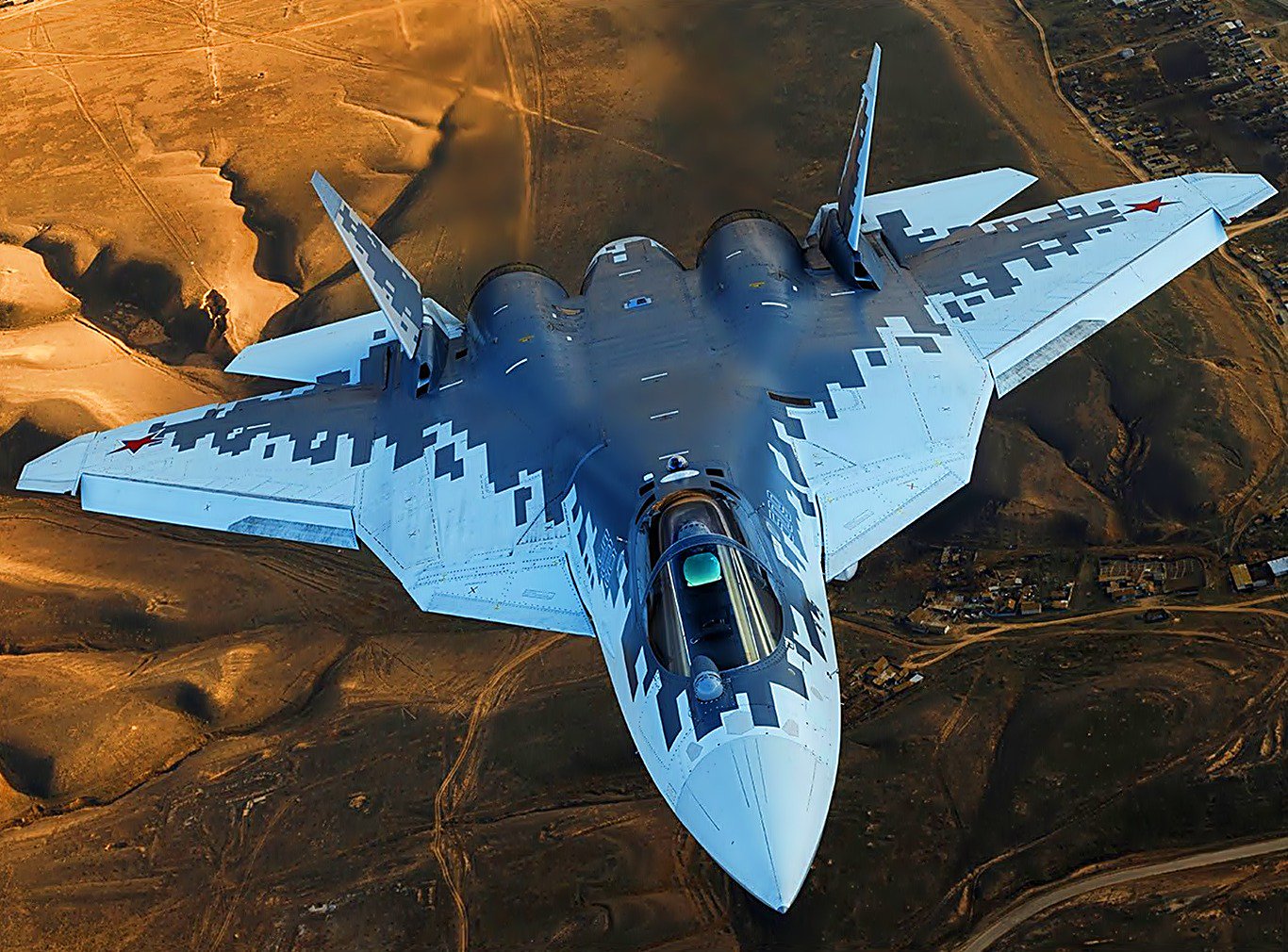
Ty: Do you see your concept as a threat to the ballooning adversary air market, or do you see it as an added plus? How do you situate yourself in what is a growing market that is actually putting jets on the ramp and putting them in the air at $15,000 an hour under the banner of saving the government money? At the same time, it sounds like you’re saying, well, I can do it for the cost of software and a helmet-mounted display and some data links.
Dan: Yeah, I am. So I’m keen to stay away from language like threatening, adversary, and stuff like that, but if we look at it objectively, I think right now, there is a massive market for everyone to play in, and I think the adversary air aircraft and the private contractors and all that kinda stuff have a very important role to play. But I don’t think it’s ultimately a sustainable solution, and I don’t think in any way, shape, or form they can provide the quantity or the quality and the relevancy of the training that we can do through leveraging this technology.
So, it’s an extremely disruptive technology for sure, and I think right now there’s room for everyone to play in this market, but what I’m doing is playing to where I think, to quote Wayne Gretzky, “I’m playing to where I think the puck is going.” And I think my vision is this, even if we did have the numbers to put up all of these adversary aircraft, what we haven’t talked about is the opportunity cost of doing that. So every time a fighter pilot goes up pretending to be a MiG-29 or a J-20, whatever they’re doing, they’re not doing what they should be doing which is training to be blue air. When we are short of fighter pilots, that is an extreme opportunity cost that we’re incurring every single day.
What I believe we should be doing is, every single sortie we fly as fighter pilots in the west, should be a blue air sortie. If we can leverage the technology to provide ample and relevant red air training, why would we ever want to put another physical asset up there in the future? Now I’m painting a vision, right? I understand that between there and that vision, there is obviously scope for everyone to play for the time being, but I am really playing to where I think the market is going. And no one understood this technology. We’re the first company in the world to pull it off. So no one was even thinking about what is within the realm of possibility.
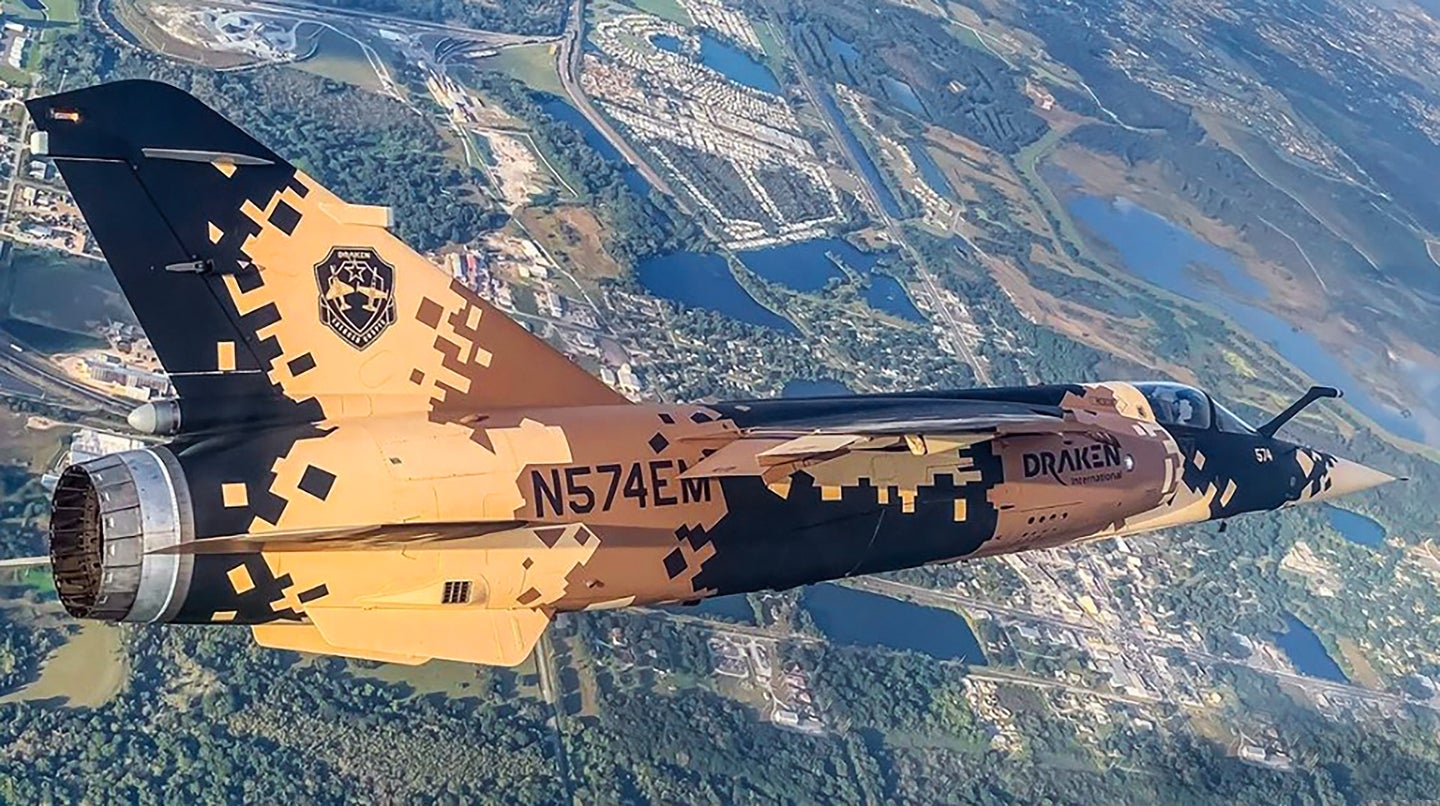
The reality of it is, I want every time I go up and fly, I wanna be doing a Blue Air sortie and then, to give you context, I was an instructor pilot on the F-22. If I wasn’t teaching, I would say 80% of my flying was providing Red Air for the guys that were going through upgrades or whatever it was. That’s incredibly frustrating because the training value… Yeah, I’m flying a Raptor, but it’s not really good training value, it’s not what we should be doing. So, if we’re limited in resources and there is capital rationing, constrained budgets and all that kind of stuff, the question is, how do we provide Red Air efficiently and I think we stand alone in our ability to be able to do that. I think that’s what’s really exciting about what we’ve cracked.
Ty: Absolutely, absolutely. So, I’m an Air Force, and I think this is really cool. What do I need to purchase it? What hardware and software are required? What do I need to make this happen for my pilots? Obviously, many fighter aircraft, including dedicated aggressors, are flying with helmet-mounted displays of all degrees of complexity, some quite simple, some more advanced, that are augmented reality devices to a lesser degree than what you’re discussing. How can you fold it into the hardware that already exists or, if not, what do you need to make it happen?
Dan: There are certain limitations to what I can obviously discuss about how we do it, but let’s just say the system is designed around four key modules. It is designed to be platform-agnostic and it can integrate into any system. Ultimately, what the pilot cares about is the display technology and the ability to visualize this stuff and, of course, we want this technology to sit within the OFP [Operational Flight Program] of the airplane or within the embedded training systems of the airplane, things like that, such that it integrates with the weapon systems onboard.
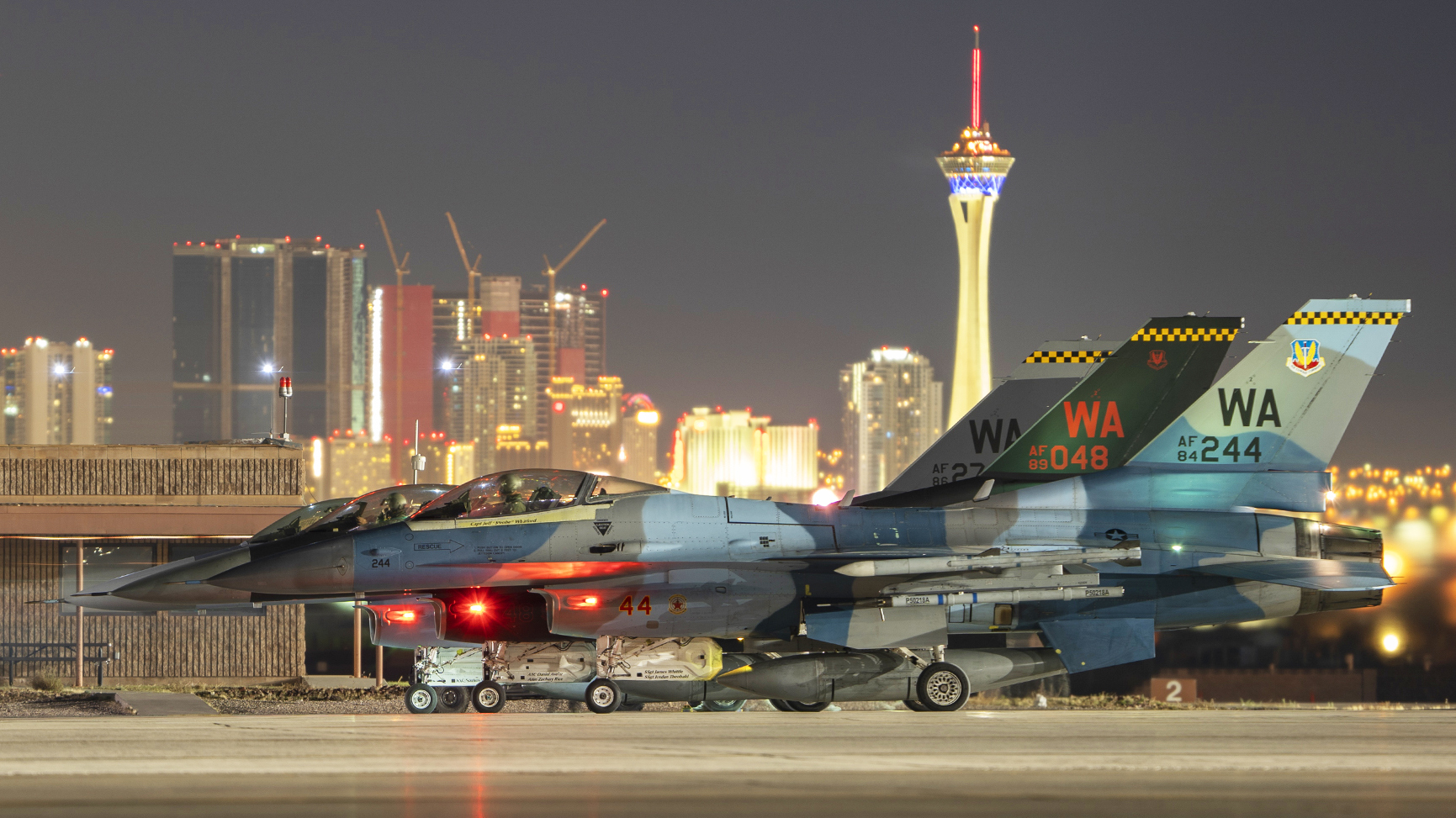
And then, in terms of the deliverables… We’re not delivering helmets or anything like that, but we are delivering a fairly unique display tech that has the ability to do all of the projection of all of the targeting symbology, and way better than anything out there right now that does it. But in addition to that, it’s presenting 3D holographic images, as well, because you have to remember, we’re not providing targeting solutions here. We’re not doing head-up displays. So, when people use the term AR and they’re talking about how helmet-mounted cueing systems, that’s not what we’re doing. We’re aiming to simulate human vision. The demands of human vision, it’s a harsh mistress because it’s very exacting.
So, let me give you an example. The current F-35 helmet has round about a 35-degree field of view in terms of the display tech and there’s a number of technical reasons why that is the case, and the latency, frankly, is pretty crap. You have to remember it’s 10 to 15-year-old technology, as well. Our second version of our prototype, right now, is sitting at a 105 degrees field of view and the deliverable that we’re working on pretty soon is 150 degrees field of view. Now, human vision is out at 180 degrees. We are pushing it out to those realms and so, ultimately, the display tech is A, extremely difficult to do and you just look across the AR market at what’s out there, go look at a HoloLens 2 or a Magic Leap. It’s really difficult to do, but it is absolutely critical to presenting the right picture to the individual in the cockpit. And then, the other parts of the system that have to do with tracking and obviously, the game engine itself as to how it displays and does all the video. There are the simulations and all that kind of stuff, but it’s all platform agnostic. It can plug and play into any airplane.
Ty: So, I’m an F-35 operator. I put on your display. There’s some other black boxes, right, like anything else?
Dan: Yeah.
Ty: I go out there and now, I’m not wearing my normal HMD, but I’m now able to execute these training sorties where that same symbology I would see normally in my HMD would be also presented in your forward vision. Is that correct, in your display system that you would provide?
Dan: Absolutely, and not only that, the symbology would make sense. It would interact with the virtual entity.
Ty: Right.
Dan: In the same way that it does with LVC.
Ty: It wouldn’t mean changing to a whole new symbology architecture or anything else?
Dan: Yeah, no, it’d just be the same. But it would be presented in a way more compelling way, with much higher brightness, field of view, fidelity and lower latency as well.
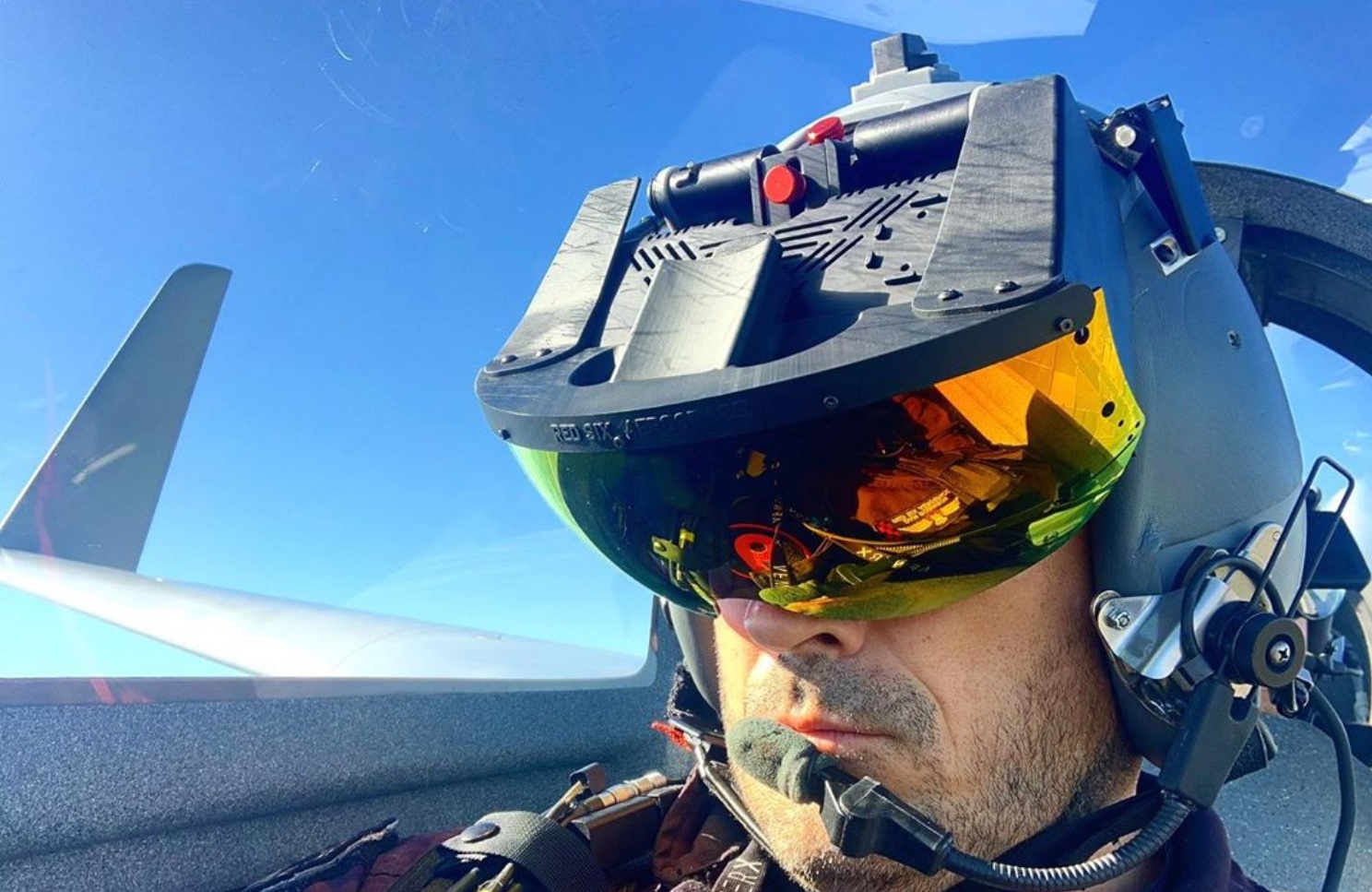
Ty: Cost-wise, one of the issues with the AR market and the VR market, to be honest with you, is money, right? These things are very expensive to develop. Do you see the potential for the AR market at large to really make a massive leap? If the government were to say, “Hey, Red 6. Yeah, we’re gonna spend millions of dollars helping you make this thing unbelievably effective,” would those same advances trickle down into the commercial space?
Dan: Yeah, I think absolutely. When you look at the consumer market for AR… I’m pretty straightforward with it. I don’t think there is a consumer market for AR right now. But I do believe the AR consumer market is coming. And when it arrives, I think it represents the single biggest inflection point in how we share and interact with our information since computers went into cellphones. So, when that explodes, it’s a trillion-dollar market. We should be paying attention to Microsoft, and we should be paying attention to Apple and Tim Cook because they’re all going for it, right?
But there are a number of technical challenges to get there. So, when that inflection point arrives, it’s gonna be massive. The question is, for AR companies out there, when that inflection points arrive? A, are you still alive? B, have you got the technology that’s relevant? And C, have you solved the right problems to take your place in that overall ecosystem? And I think what we have is the right strategy through DoD largely driven by such a compelling use case that affords us an opportunity to work on technology that is absolutely leading edge for the warfighter, that directly parlays into a broader consumer vision of AR when that market opportunity arrives, which it will arrive. And so, yeah, I think you’re exactly right.
DoD, as the customer, is the right way to do it, and I think you’re seeing that being reflected in the big AR players out there, like Microsoft and even Magic Leap. For all of the problems they’ve gone through, Magic Leap is way late in figuring this out because their strategy was incoherent, but Microsoft is chasing an enterprise market with HoloLens, because there’s no consumer market out there right now. How can you justify selling a headset at $3,800 to someone that’s gonna wear it once or twice, and certainly not gonna be able to use it outdoors. You can’t. So enterprise is the right route to a successful AR future, and within enterprise, I think DoD is a specific customer base that is crying out for AR, and AR can actually solve many real problems.

Ty: On the many problems front, what comes to mind is, we’re talking adversary air, air-to-air combat, but you mentioned tanking, and obviously there are plenty of other mission sets that could be applicable to this technology, such as air-to-ground training. Then, as the tech evolves over time, you could probably build much more complex environments to help tailor what the mission would be down to probably the environment itself. And then there’s the ground side of things. Soldiers on the ground could potentially use this same sort of technology and probably get a lot out of it in a similar manner. Where do you see the very long-end of this going? You talk about the warfighter, is this going to be something where a soldier on the ground with a rifle is going to be using it as much as a guy flying an F-22 in the decades to come?
Dan: Yeah, I’m smiling because it’s absolutely the right question to ask, and it’s indeed on our roadmap. We can talk training, for sure, but we also talk operations, as well. My vision is, yes, in the same way that we’re doing this for the aviators, we don’t go to war just as an air force, right? We operate across multiple domains as a joint force, and so, what we need to have is situational awareness, we all have to have the same situational awareness.
Just let me give you an example, if there’s a special forces guy on the ground calling in an attack on, let’s say, a tank, or a farmhouse, or something like that, and it’s a training scenario, well, wouldn’t it be great if that tank was synthetically generated and the guy on the ground is in our AR system, talking to the individual up in his airplane that’s about to drop a smart bomb on that tank or something like that? Wouldn’t it be great if they could see the same common picture within the augmented world? And we’re calling that the joint augmented battlespace because you’re exactly right. We’re solving, probably the most complex challenge of all, because airplanes flying around at multiple hundreds of miles an hour in three dimensions, well, if we’ve solved it for that we’ve certainly solved it for a tank, a boat, whatever it is on the ground. The ability to connect those individuals together is something that represents a truly exciting and massive market opportunity. And it doesn’t stop there. I touched upon it a little earlier because I think whilst there are massive training applications for this, there are also massive operational applications through this technology.
Let me give you an example, guys and girls on the ground fighting for their lives trying to call in close air support. For the individual in the cockpit that’s about to press that button, that’s a tremendous amount of stress, especially if they’re in a sort of danger-close scenario, right where there are troops in contact. You want to make sure that you get that right. So, we all just used the traditional ‘nine line’ to call in close air support, and stuff like that. Well, what if we were connected in an augmented world? And, we could paint targets on the ground, bad guys and good guys clearly delineated through whatever visuals you wish to use. It would take away ambiguity, it would shorten the kill chain massively, and it would absolutely save lives, and there are multiple applications that we could think of and discuss, but I think there are huge operational aspects for this tech as well.
Ty: And the data link infrastructure is obviously progressing quite fast on the other side of things.
Dan: Yeah.
Ty: That isn’t really related at this time to what you’re doing directly, but, you can imagine them being able to plug in together to be able to send those, using a common waveform, to be able to send that information back and forth, where everybody sort of has the same picture, or at least the information that they needed at the time they need it.
Dan: Yeah, you’re absolutely right. And data links in those communications are massive, massive pieces of this, but, of course, there are tons of companies out there that are doing the Lord’s work in that, and it’s just about getting the right partners.

Ty: So the Red Air market is kind of blowing up right now, and we’re also seeing the JTAC [forward air controller] training marketplace becoming pretty hot. When you think of things, you’re mastering sort of the air realm of AR. Have you looked at JTAC training? Because, they’re also putting up aircraft that’s burning thousands of dollars an hour up, flying above them, to do something that’s fairly rudimentary compared to air-to-air combat.
Dan: We are absolutely discussing it. We understand the market opportunity there, as well. It is simply having bandwidth within the existing team and obviously that requires us to bring more resources in. One of the big priorities for me this year is to go out and raise our series A round of financing. This will enable us to do that, but of course, things like the SBIR Phase III from the Air Force are immensely helpful, as well.
Ty: In terms of the T-X, well the T-7 Red Hawk now, the USAF is putting a lot of money into it and really wants to fully change its training apparatus and how it works, lowering the amount of time that a pilot takes to get into an actual operational unit. A lot of that will be centered around getting the basic training down in a different manner than what existed in the old training pipeline. Do you see a student as being able to go out and learn formation keeping with a tanker via using your AR solution? What about learning the primary elements of basic fighter maneuvers (BFM, aka dogfighting)? Do you think it’s going be applicable to the primary military pilot training market too, in addition to the advanced training one? Having F-35 or F-22 pilots going-up against synthetic bad guys is one thing, but what about the lower-end training spectrum?
Dan: Yeah, again, I’m smiling, because you’re asking all my favorite questions. The simple answer is yes, we are doing that. Because whilst the genesis of this was to solve red air, we immediately started figuring out very quickly that, oh my gosh, this has massive applications for how we physically produce pilots… Once you get past the, “Here’s how to fly an airplane up, down, left, right,” most of the flying done in the military is tactical, so you’re flying with someone else.
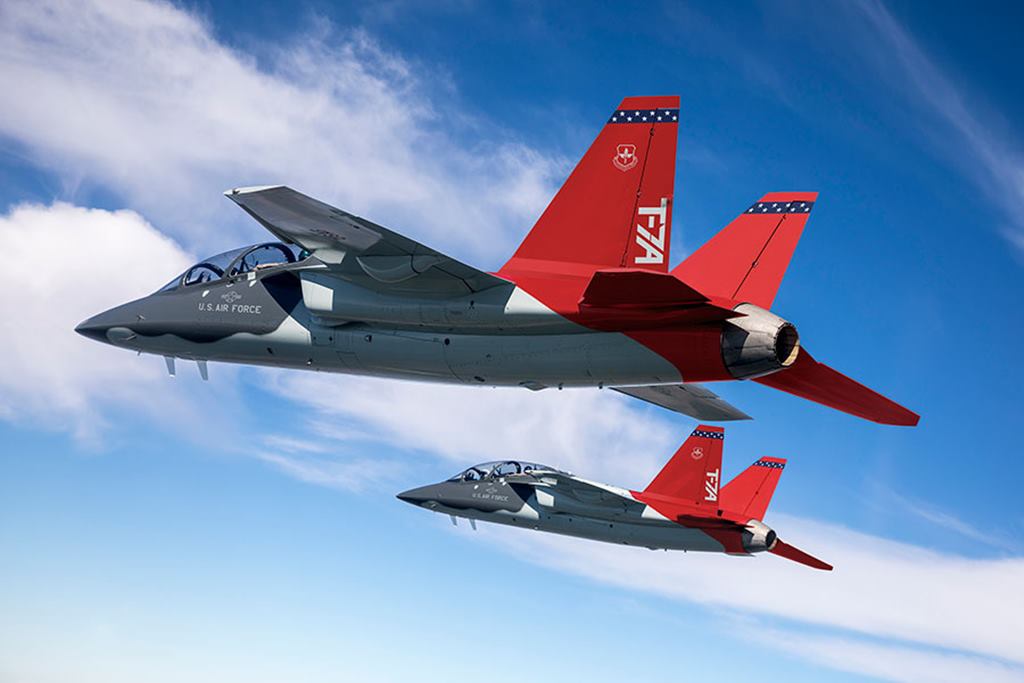
So, every time you go up to practice formation, you need someone to formate on. One of the scenarios we’re working on right now is tactical formation for a T-38. And we’re actually doing our first integration into an air force platform later in the year, Q4 of this year I think we commence it, into T-38s to start looking at exactly the problems you talked about. How can we get guys and girls to work with a tanker? How can we teach them basic formation, tactical formation? How can we teach them strafe patterns, things like that? Even within BFM, the ability to, for example, draw the flight paths of the bandits that their flying against, and draw turn circle entries and control zones and things like that. If you can imagine it and you can think there’s a value proposition, then it can be done because it’s simply code. And so, yeah, we’re certainly focusing heavily on that, and I think you’ll see us integrating into T-38, T-6s, and then into tactical airplanes, as well.
Ty: One thing that I know readers are going to ask, especially those that are not as familiar with the VR and AR space and with the whole red air capacity situation that we’re in right now, is why can’t the Air Force just build more simulators? What does Red 6 give you that a full-dome simulator can’t?
Dan: Yeah, absolutely. So I’ll say this. I think simulators play an incredibly important role in the training of a fighter pilot. They’re very good for repetitive tasks. They’re very good for process-driven tasks. But what simulators cannot simulate or emulate in any way, shape or form is the cognitive load on an operator when they’re out there physically flying an airplane, when they can run out of fuel, pull G force, be shot at, their lives at risk. It fundamentally changes the name of the game. We always joke you can be Chuck Yeager everyday in a simulator when you know that you’re just gonna step outside, and it’s basically, in essence, a big video game, right? But when you’re flying that airplane for real and your under all of that stress, that cognitive stress, that physical duress, and you put your helmet on, we say you lose 50% of your brain capacity. And when you close the canopy, you lose the other 50%.
Flying airplanes is a fundamentally different proposition to flying in a simulator. And so what we’ve done here is we’re acknowledging that live flight has to happen, and I don’t think you’re gonna get anyone that’s gonna argue that otherwise, once informed. We understand that simulators are of a big value proposition. What we’ve identified is a spot in the middle that no one has thought of yet.

What I want to do is every… I come back to it as every time we fly… If we accept that we have to fly, which we do, every time we fly, we should be giving our warfighters absolute goodness of training. It should be relevant, it should be blue air, and they should be out there doing those things for real. So, I don’t think we’re replacing simulators at all, but I don’t think simulators can offer anywhere near what we can offer in terms of the physical realities of flying high-performance airplanes.
Ty: What are the roadblocks? What are the challenges to getting this where it needs to be, where it’s effective? Can we get to a point where the Weapons School can say, “Hey, we wanna build a J-20 adversary,” and it’s a case of a software engineer building that aircraft to their specifications and then fighting it in AR? How do we get to that point?
Dan: Look, I think there are obvious technical challenges, right? This is leading-edge technology, and it’s extremely encouraging, and we’re getting really good results. But, of course, integrations, we’re inevitably gonna come across a speed bump. That’s just a given. I think the single biggest thing that I worry about is actually a cultural issue. What I mean by that is the Air Force is making great strides through Dr. Roper and senior leadership to really embrace innovation. AFWERX is a great case in point. What we tend to find, and this will come as no surprise to you, is it’s the frozen middle where you come up against those cultural roadblocks and barriers to entry and people that are reluctant to change because we’ve always done it this way. The thing I worry about, I think, perhaps most of all is that we need to innovate and we need to innovate quickly, rapidly. We need to fail fast, learn the lesson, and move on all the time. Because that’s what the Chinese are doing and they’re eating our lunch.
If we don’t have a culture that embraces innovation and incentivizes innovation at every level of the military, then we are going to leave a bunch of value on the table, and we’re never going to be a truly innovative service. I believe the service leadership at the top want it. I believe Dr. Roper, through AFWERXs and a bunch of other initiatives, is doing fantastic work. Absolutely fantastic. I believe the warfighters on the ground want it. Generally, where you find sort of roadblocks is in the frozen middle management. It’s not something that is certainly insurmountable. It can all be overcome. It’s just we want to move with the speed of heat because we need to move at the speed of heat, and so I would encourage leadership at all levels to just really embrace a culture of innovation.
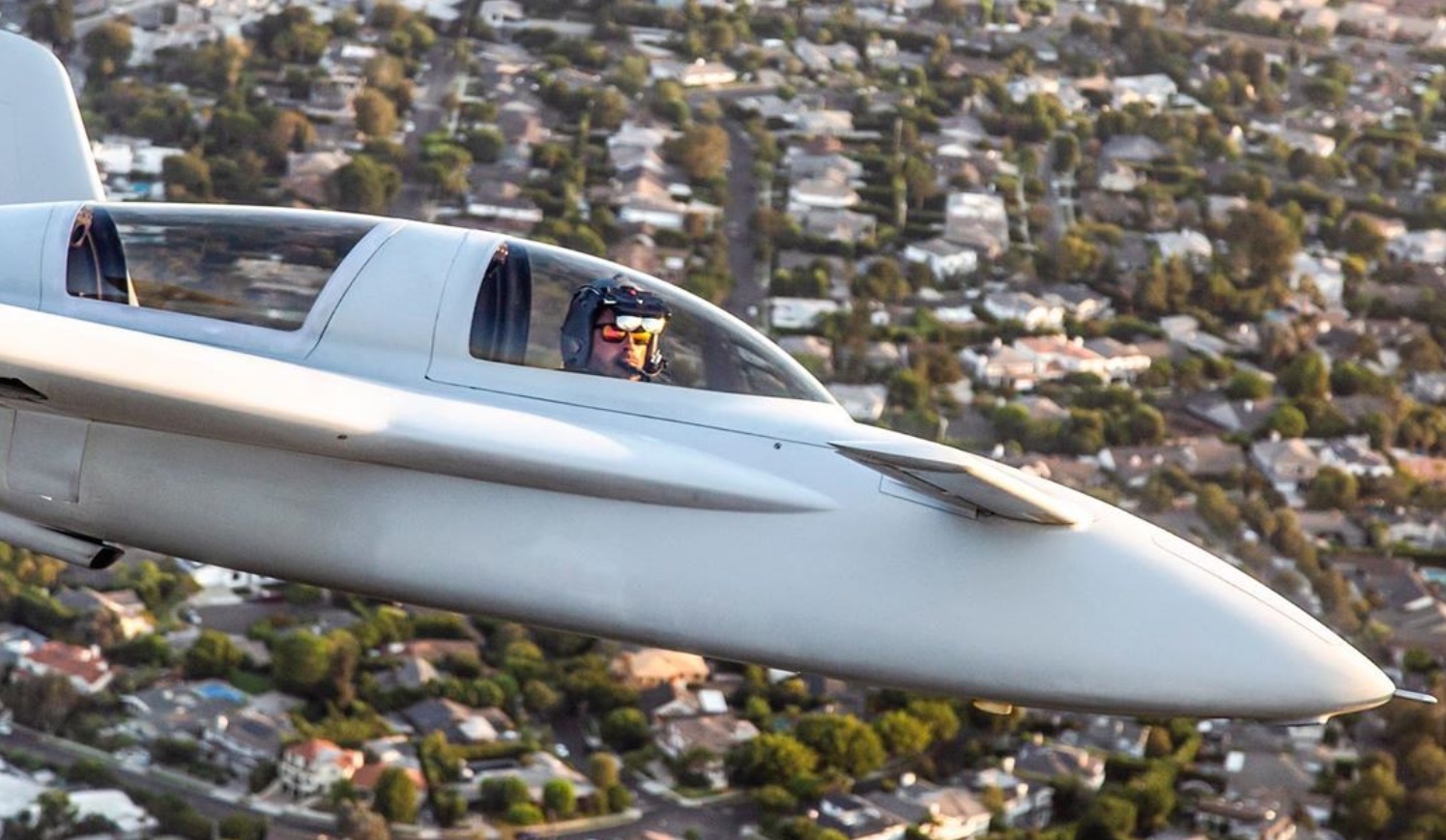
The private sector is just able to move so much quicker than DoD. I was asked a question once by a senior general in the Air Forces, “How fast can you go with this technology?” And my answer was, “As fast as you’ll let us.” Because we’re certainly not going to be the ones that are delaying progress on this stuff. So, I think that’s the single biggest risk and thing that we have to be concerned about and make sure we get right.
TR: That’s something I’ve talked about continuously, especially in the unmanned space, the resistance. With all the platitudes that exist within the Air Force about unmanned technology, there is a resistance. And in the Navy, for that matter, as well. There’s a key resistance when it comes to eliminating pilots, but not for the lower end stuff that isn’t sexy. But when you talk about potentially removing fighter pilots from cockpits in any way, it doesn’t matter if it’s AR or if it’s unmanned technology, there seems to be a massive cultural hurdle, and progress is stymied even though the technology clearly exists and maybe it’s even existed for decades. Do you see running into similar potential roadblocks, because that’s one less fighter pilot that’s flying in a fighter every day to provide red air support and the white scarf culture will resist it?
Dan: It’s a great question, but I’d just throw it back to you because I don’t think it’s the right sort of thinking from their perspective. On the contrary, we’re not aiming to reduce the number of flying hours the pilots get. I’d want to double the number of flying hours a pilot can get because we’ve got so much more spare resources… Now we’re protecting our assets. We’re not beating them up doing red air. What I want them to do is every time they go flying BFM, I want them to fly BFM as an F-22. I don’t want to go up there and pretend to be a MiG-29. So I say that this is a gross oversimplification, but I think this kind of technology gives commanders optionality, and you can think about it in this context. I can either double the amount of flying you’re getting, or I can half your training cost.
Now, that’s a gross exaggeration, but somewhere in there lies that value proposition for commanders, right? And it’s scalable. You can bring it up or down depending on the operational tempos, what you’ve got going on at that time. The point is, you have that optionality. So, on the country, I don’t think it’s a threat to flying. I think it offers you the chance to fly more and more relevantly, for sure. Then coming back to the culture of people just kind of putting roadblocks in place, I think the fundamentals of this, the market decides, right? Because the fundamentals of supply and demand exist. There is a massive, massive demand signal and chronic undersupply.
Given those fundamentals, this technology has massive applications. The other thing is that people move on from careers and all that kind of stuff. You can’t stop technological advancement. There’ll be bumps and hurdles and naysayers and all that kind of stuff, but it’s coming and it’s going to happen for sure.
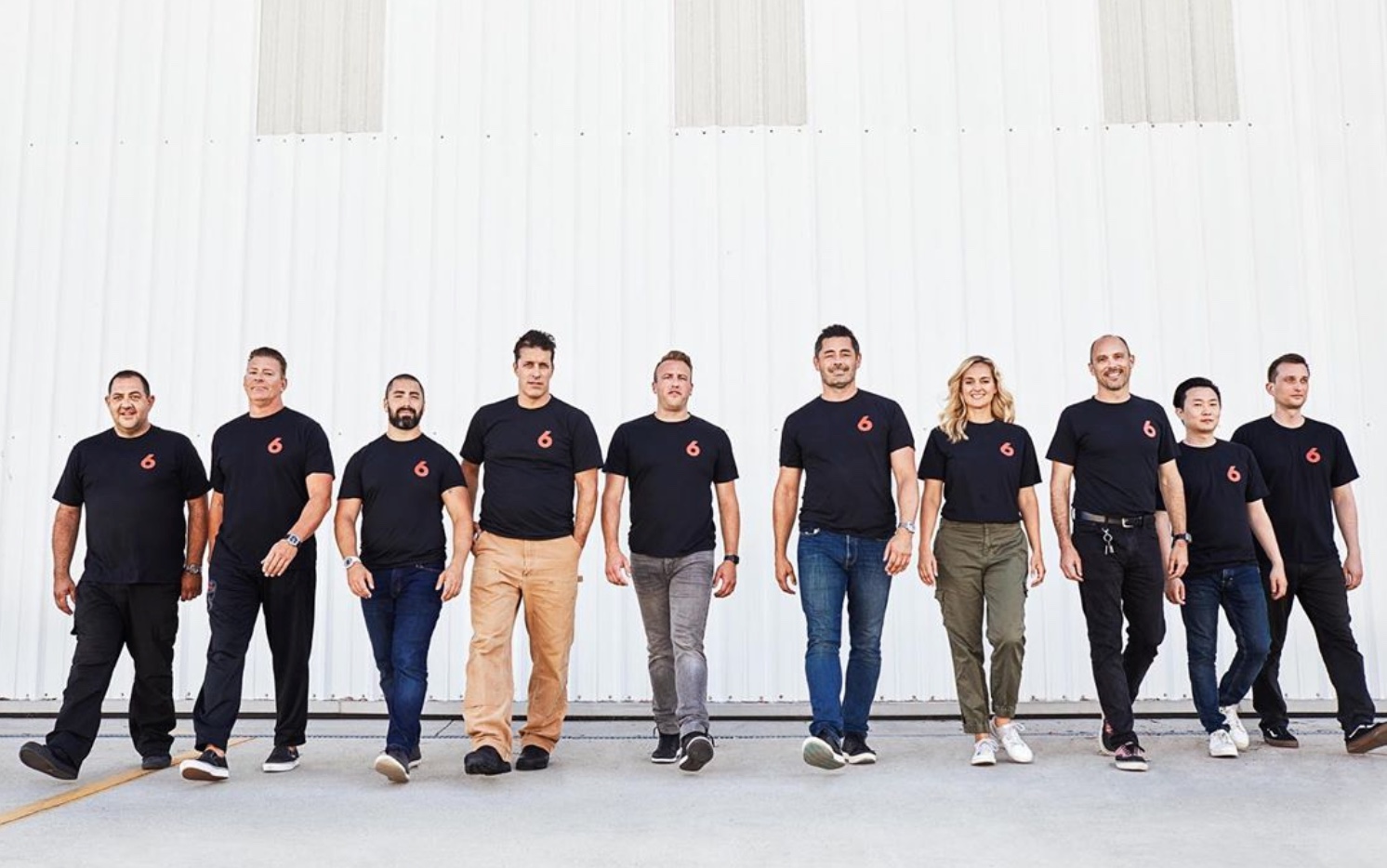
Author’s note: A huge thanks to Mike Killian who took many of the photos seen in the feature on behalf of Red 6. Make sure to check out more of Mike’s outstanding work here.
Contact the author: Tyler@thedrive.com
